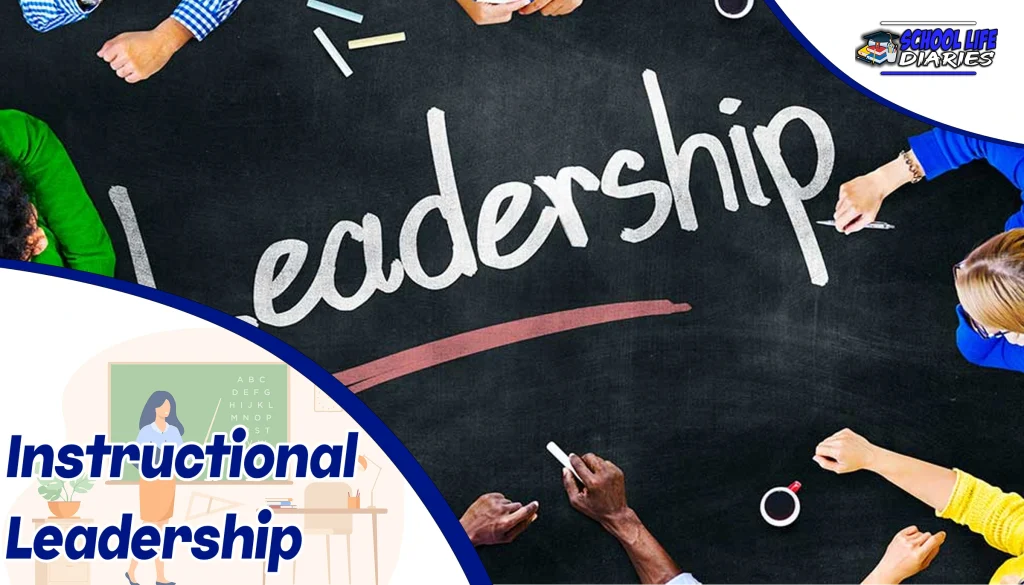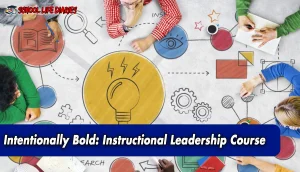Instructional leadership is a concept that holds significant importance in the field of education. It refers to the role of a school leader, typically a principal, in guiding and supporting teachers to improve instructional practices and enhance student learning outcomes. This approach emphasizes the crucial role of principals in shaping the curriculum, creating a positive school culture, and fostering professional growth among teachers.
What Does it Mean to be an Instructional Leader?
Instructional leadership refers to the role of a leader in guiding and supporting teachers in their instructional practices. It involves various key elements such as talent versus skill, collaboration, listening, support, and visibility. Effective instructional leaders prioritize listening to their teachers’ needs and concerns while providing support through resources, mentorship, and feedback.
Talent vs Skill
Talent and skill are two distinct yet interrelated concepts that play a pivotal role in shaping effective instructional leadership, evoking a sense of awe and admiration for the intricate balance between innate abilities and acquired expertise. While talent refers to natural aptitude or giftedness in a particular area, skill is the result of deliberate practice, experience, and continuous improvement.
Effective instructional leadership requires honing skills such as strategic planning, data analysis, collaboration facilitation, and decision-making through practical experience and intentional professional development. Through the cultivation of leadership qualities, effective communication, and a commitment to continuous improvement, instructional leaders can navigate the complexities of education with finesse and lead their schools toward success.
Collaboration
Collaboration in the field of education involves a collective effort among individuals with diverse expertise and perspectives to work together towards a common goal of promoting student success and fostering a culture of continuous improvement. It emphasizes the importance of teamwork, communication, partnership, and cooperation among educators, administrators, and other stakeholders. Effective collaboration requires open lines of communication and a shared vision for student achievement. Educators must be willing to listen to each other’s ideas, provide constructive feedback, and engage in meaningful dialogue to find solutions to complex educational challenges.
Collaboration is an integral aspect of instructional leadership in education. It enables educators to combine their talents and skills towards a common purpose – improving student outcomes. Through teamwork, effective communication channels are established which promote innovation within classrooms while also fostering partnerships with parents/guardians and the wider community.
Listening
Listening is a fundamental skill that enables educators to gather valuable insights, understand student needs, and establish meaningful connections with their students. Active listening plays a crucial role in effective communication between teachers and students. By actively listening to their students, educators can demonstrate empathy and understanding toward their concerns and experiences. This empathetic understanding allows teachers to create an inclusive and supportive learning environment where students feel heard and valued.
As instructional leaders continue to prioritize listening skills in their practice, they contribute significantly towards establishing a classroom climate that supports student engagement, growth mindset development, and ultimately academic success.
Support
Support is a crucial element in creating an environment where students feel nurtured and empowered to reach their full potential. Teacher empowerment plays a significant role in providing the necessary support for student success. When teachers feel empowered, they are more likely to take ownership of their classrooms and instructional practices, leading to better outcomes for students. This empowerment can come from various sources, such as school leadership encouraging teacher autonomy and decision-making or providing opportunities for collaboration and shared decision-making among educators.
Resource allocation is another aspect of support that impacts student success. When schools allocate resources effectively, they can provide students with the tools and materials necessary for their learning. This includes access to technology, textbooks, classroom supplies, and other instructional resources. Adequate resource allocation ensures that all students have equitable opportunities to learn and succeed.
Visibility
Visibility in educational settings refers to the extent to which teachers and students are seen, recognized, and valued within the school community and their contributions acknowledged. When leaders prioritize visibility, they actively engage in observing classrooms, interacting with teachers and students, and participating in various school activities. This presence allows them to gain a deeper understanding of the challenges faced by educators and learners alike.
Visibility in educational settings is crucial for creating an inclusive environment where everyone feels valued and supported. Through effective communication channels, feedback mechanisms, modeling best practices, and recognition of achievements, instructional leaders can promote visibility within their schools. This emphasis on visibility enhances engagement among all stakeholders while facilitating continuous improvement in teaching and learning practices.
Relationships
Building strong relationships is crucial for instructional leaders as it fosters a positive work environment and enhances overall school effectiveness. One key aspect of building relationships is establishing trust with teachers and staff members. The trust serves as the foundation for effective collaboration, open communication, and shared decision-making. Instructional leaders can build trust by consistently demonstrating integrity, honesty, and transparency in their actions and interactions with others.
Communication strategies play a vital role in building relationships as well. Instructional leaders need to be adept at both verbal and nonverbal communication techniques to effectively convey information, expectations, and feedback. Clear communication helps prevent misunderstandings or conflicts while promoting a culture of openness and understanding.
Learning
Learning is a fundamental process that empowers individuals to acquire knowledge, develop skills, and gain insights that can shape their personal and professional growth.
In the context of instructional leadership, the focus on learning revolves around the implementation of effective learning strategies, fostering student engagement, employing assessment strategies, promoting professional development, and integrating instructional technology.
To enhance learning outcomes, instructional leaders employ various learning strategies that cater to diverse learners’ needs. These strategies may include differentiated instruction, cooperative learning activities, and project-based learning. By using a variety of approaches tailored to individual students’ strengths and weaknesses, instructional leaders create an inclusive environment where all learners can thrive.
What Are Your Strengths as an Instructional Leader?
This discussion focuses on the strengths of an instructional leader in creating a positive learning culture. An instructional leader with strong communication skills can effectively convey expectations and foster collaboration among staff members to enhance the learning environment.
Learning Culture
To foster a positive learning culture, it is important to create an environment that promotes collaboration and encourages students to take ownership of their learning. One way to achieve this is through professional development opportunities for teachers. By providing ongoing training and support, educators can enhance their instructional practices and stay up-to-date with the latest research and teaching methods. This not only benefits the teachers themselves but also has a direct impact on student learning outcomes.
Another key aspect of fostering a positive learning culture is establishing a feedback culture within the school community. Feedback should be seen as a tool for growth and improvement, both for teachers and students. Empowering teachers is essential to building a positive learning culture. When educators feel valued and trusted, they are more likely to take risks in their teaching, try new strategies, and innovate in the classroom. Providing autonomy allows them to tailor instruction according to the needs of their students while still aligning with curriculum goals.
Promoting a positive learning culture requires attention to several key factors such as professional development opportunities for educators, establishing a feedback culture that fosters continuous improvement, empowering teachers by giving them autonomy over their instructional practices, and building trust among all stakeholders within the school community.
How Does a Principal Impact Curriculum?
Principals have a significant influence on the development and implementation of curriculum within their schools, shaping educational programs and ensuring alignment with academic standards and goals. They play a crucial role in determining the content and structure of the curriculum, making decisions that impact what students learn and how they learn it. By providing instructional leadership, principals can directly impact educational outcomes.
One way principals impact curriculum is by selecting appropriate resources and materials for teaching. They carefully review textbooks, online resources, and other learning materials to ensure they align with the school’s educational goals and meet academic standards. Through these decisions, principals demonstrate their commitment to providing a comprehensive curriculum that prepares students for success. Principals play a pivotal role in shaping curriculum within schools through their instructional leadership. Their impact is felt through resource selection, instructional strategy guidance, and resource allocation decisions such as scheduling and hiring practices.
Intentionally Bold: Instructional Leadership Course
The Intentionally Bold: Instructional Leadership Course offers educators a comprehensive and impactful opportunity to enhance their skills and knowledge in guiding curriculum development and implementation. This course focuses on the concept of instructional leadership, which is the practice of providing guidance and support to teachers in order to improve student learning outcomes. Through this course, educators are equipped with the necessary tools and strategies to effectively lead curriculum initiatives within their schools.
One of the strengths of this course lies in its emphasis on creating a positive learning culture within schools. Instructional leaders play a crucial role in shaping the overall environment in which teaching and learning take place. The Intentionally Bold: Instructional Leadership Course provides educators with insights into how they can cultivate such a culture by promoting open communication, encouraging collaboration among staff members, and valuing continuous improvement.
Conclusion
Instructional leadership is a crucial aspect of educational administration that focuses on improving teaching and learning in schools. It involves providing support, guidance, and resources to teachers, as well as monitoring their instructional practices. By promoting effective teaching strategies and fostering a positive learning environment, instructional leaders can positively impact student achievement. One key strength of instructional leaders is their ability to effectively communicate with teachers and provide them with valuable feedback. This helps teachers enhance their instructional skills and implement best practices in the classroom.
The principal’s impact on curriculum is pivotal as they oversee its implementation across the school. They work closely with instructional leaders and teachers to develop a comprehensive curriculum that promotes student engagement and success. Principals also facilitate professional development opportunities for staff to enhance their knowledge and skills in delivering quality instruction. By creating a supportive culture that values continuous improvement, principals encourage collaboration among educators, leading to enhanced student outcomes.








